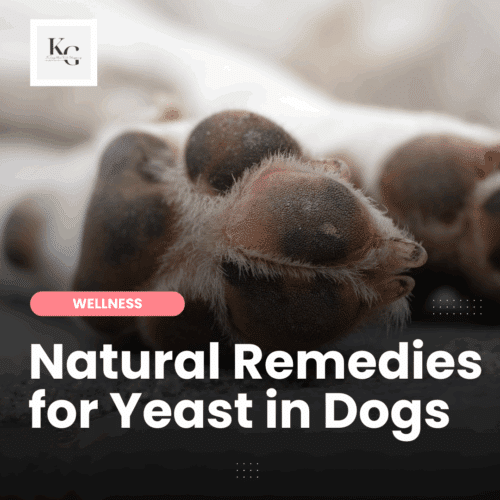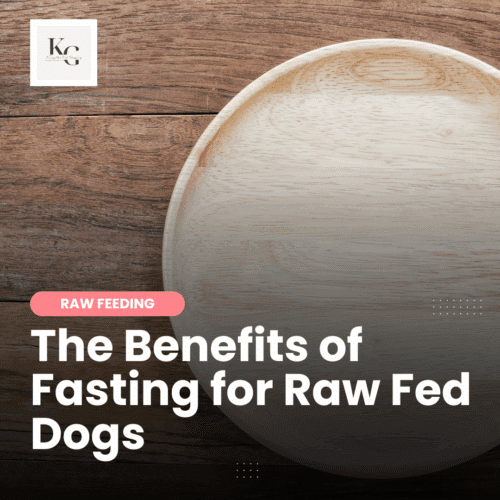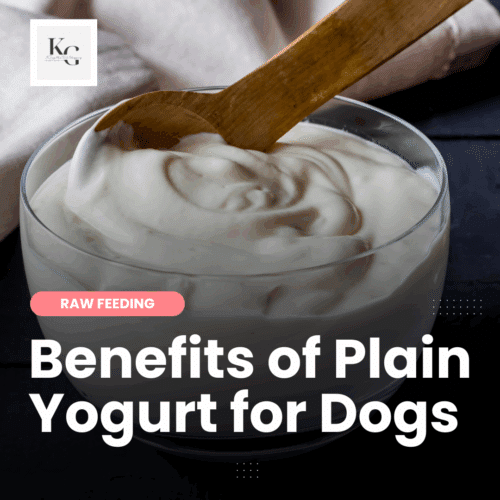Keep the Tail Wagging is supported by pet parents. I occasionally earn a commission (at no additional cost to you) when you click through an affiliate link to one of my favorite products. Thank you for your support. Read More
A common argument against homemade dog food recipes is that they are deficient in essential nutrients, leading to serious health conditions in our dogs. As someone who has avoided this risk through research, software, and a base mix, I've been guilty of rolling my eyes when I hear this argument. Lately, I'm wondering how accurate this argument is. Should we be concerned?
Homemade Dog Food Recipes are Deficient
The Research
Determining the exact percentage of homemade dog food recipes deficient in essential nutrients can be challenging due to the variability of recipes and the lack of comprehensive studies. Most of the information I found was anecdotal, with a few exceptions. The following resources discuss the deficiencies in homemade dog food recipes, common nutrients that are often lacking, and how this information was compiled:
Resource 1: Evaluation of recipes of home-prepared maintenance diets for dogs
- Findings: A study conducted in 2013 evaluated 200 recipes for homemade dog food available online and in books published by veterinarians and laymen. They found that 95% of the recipes did not provide all essential nutrients in the amounts recommended by the National Research Council (NRC).
- Nutrients Most Often Deficient: The study highlighted deficiencies in key nutrients such as calcium, vitamin D, potassium, zinc, and essential fatty acids in the homemade dog food recipes.
- Compilation: The researchers collected a wide range of homemade dog food recipes from online sources and analyzed them for nutrient content based on established nutritional guidelines for dogs. However, there is a question about the resources used to tabulate the nutritional data and whether the increased bioavailability of fresh food was considered.
Resource 2: Analysis of recipes of home-prepared diets for dogs and cats published in Portuguese
- Findings: A study conducted in 2017 evaluated 106 recipes for homemade pet food; 80 were for dogs, 24 for cats, and two were for both species. They found that all the recipes were deficient in at least one essential nutrient.
- Nutrients Most Often Deficient: Commonly deficient nutrients in homemade dog food include calcium, choline, vitamin E, and trace minerals like copper and zinc.
- Compilation: The diets were analyzed using a commercial software package. An ingredient chemical composition database was created based on Brazilian Tables of Food Composition and United States Department of Agriculture Nutrient Database. The chemical composition of each recipe was estimated and compared with FEDIEF recommendations.
The Conclusion
Overall, while the exact percentage of deficient homemade dog food recipes may vary, these resources highlight the importance of carefully formulating and evaluating homemade diets to ensure they meet the nutritional needs of dogs.
For years, I believed nutritional deficiencies in a homemade pet diet were rare, but I now understand that it is a concern – specifically for people who mistakingly believe…
- random homemade recipes they find online are a good fit for their dogs
- feeding a ground protein, mixed vegetables, and rice constitutes a balanced diet for dogs
- it isn't necessary to vary their dog's diet by feeding more than one protein
Risks of Homemade Dog Food Recipes
Some common health problems that can arise from feeding dogs homemade diets that lack essential nutrients include:
Nutritional Deficiencies: Dogs fed inadequately balanced homemade diets may suffer from specific nutrient deficiencies, leading to various health issues:
- Bone and Joint Problems: Inadequate calcium and phosphorus levels can result in skeletal issues such as bone deformities, weak bones, and growth abnormalities.
- Dermatological Issues: Deficiencies in essential fatty acids can lead to dry, itchy skin, a dull coat, and increased susceptibility to skin infections.
- Weakened Immune System: Insufficient vitamins and minerals can compromise the dog's immune function, making them more susceptible to infections and illnesses.
Digestive Disorders:
- Gastrointestinal Upset: Inadequate fiber content or inappropriate balance of dietary components can lead to digestive issues such as diarrhea, constipation, bloating, and gastrointestinal discomfort.
- Pancreatitis: Feeding diets high in fat or lacking proper nutrient balance can increase the risk of pancreatitis.
Weight Management Problems:
- Obesity or Malnutrition: Inadequate calorie control or lack of proper nutrient balance can result in weight management problems, leading to obesity or malnutrition depending on the diet composition.
Metabolic Issues:
- Diabetes: Diets high in carbohydrates and lacking proper fiber content can contribute to the development of diabetes in dogs.
- Hypothyroidism: Inadequate iodine or selenium in the diet may lead to thyroid hormone imbalances and the development of hypothyroidism.
Dental Health Concerns:
- Dental Diseases: Diets lacking appropriate dental health components or causing imbalances in pH levels can lead to dental issues such as tartar buildup, gum disease, and tooth decay.
Organ Dysfunction:
- Liver or Kidney Problems: Inadequate protein quality or quantity, excess phosphorus, or other nutrient imbalances can strain the liver or kidneys, leading to organ dysfunction over time.
Behavioral Changes:
- Hyperactivity or Lethargy: Nutritional imbalances can affect a dog's energy levels and behavior, leading to hyperactivity or lethargy.
While I believe that the pressure to balance a dog's diet can be overwhelming and, in some cases, because every dog is unique; what represents balance to one dog may not be the same for another.
I also understand that failing to meet a dog's nutritional needs can lead to health issues down the line that may not be reversible. And, because dogs hide their illnesses well, their owners may not realize there is a deficiency until their dog suffers from one of the above side effects.
That being said, I've found balancing the homemade diet for my dogs to be easy to accomplish through several resources.
Formulating Dog Food Recipes
There are several paths one can take to make sure the homemade diet they feed to their dogs is nutritionally complete:
- Animal Diet Formulator software – $250/year or $25/month; there is a 14-day free trial period.
- Professional Meal Formulator – the cost range is $75 to $300, and more depending on your needs.
- Use a Raw Food Calculator – the Feed Real Institute has a cool calculator and a Wellness membership that offers a free monthly consultation with a nutritionist.
- Use a Base Mix – I use Raw Vibrance and Paradigm by Dr. Harvey's
Adding a Base Mix to Dog Food Recipes
A base mix is a mixture of dehydrated whole food ingredients that help dog owners feed a nutritionally complete homemade diet by adding the protein of their choice.
I start with a base of 80% muscle meat, 10% bone, and 10% organ meat, adding 1-1/2 to 2 cups of Dr. Harvey's base mix to every 10 to 15 pounds of the 80/10/10 blend. By doing this, I can save money using less base mix because my dogs gain the bulk of their nutrients from the 80/10/10 blend. I've had my dogs nutrient tested twice to confirm that this formulation does create a balanced diet.
Raw Vibrance Ingredients
Broccoli, Green Beans, Squash, Celery, Cabbage, Carrots, Crushed Eggshell, Spinach, Beets, Raw Goat’s Milk Powder, Apples, Blueberries, Bone Meal, Sesame Seeds, Chia Seeds, Shiitake Mushrooms, Green Lipped Mussel Powder, Ginger, Kelp, Parsley, Eggshell Membrane
Paradigm Ingredients
Broccoli, Green Beans, Bone Broth, Red and Green Bell Pepper, Cabbage, Pumpkin, Celery, Kelp, Alfalfa, Turmeric, Ginger, Red Clover, Dandelion, Cinnamon, Crushed Eggshell, Tricalcium Phosphate, Zinc Proteinate, Iron Proteinate, Taurine, Selenium Yeast, Vitamin E Supplement, Copper Proteinate, Nicotinic Acid, Manganese Proteinate, L-Carnitine, Vitamin A Acetate, d-Calcium Pantothenate, Thiamine Mononitrate, Pyridoxine Hydrochloride, Riboflavin Supplement, Vitamin B12 Supplement, Biotin, Calcium Iodate, Vitamin D3 Supplement, Folic Acid
Raw Vibrance vs. Paradigm
The main differences between Raw Vibrance and Paradigm are:
- Raw Vibrance is helpful for all dogs, and it also supports senior dogs and dogs with joint inflammation, allergies, kidney disease, liver disease, and pancreatitis. It also supports the immune system.
- Paradigm is a low-carb and low-glycemic diet, which is excellent for obese dogs and dogs prone to pancreatitis and living with heart issues, kidney disease, Cushing's disease, liver disease, seizures, diabetes, and cancer.
- Paradigm contains some synthetic nutrients; Raw Vibrance does not.
- Raw Vibrance and Paradigm are both grain-free.
Other Dr. Harvey's Base Mixes
Canine Health – helpful for dogs with IBD, sensitive stomachs, loose stools, kidney disease, and heart issues, and it's great for puppies.
Veg-to-Bowl – a grain-free mix that is helpful for dogs with allergies and kidney disease. It's also helpful for weight loss.
Veg-to-Bowl (fine ground) – a grain-free mix formulated for small breed dogs. It's helpful for dogs with allergies, sensitive stomachs, and kidney disease.
The links to the base mixes will take you to Amazon, which offers overnight shipping, and Subscribe & Save (which I've chosen). You can also order these products directly from Dr. Harvey's.
Nutritional Blueprint Testing for Dogs
If you want to learn if your dog is living with any deficiencies, consider ordering a nutritional blueprint test from ParsleyPet. I used this test to confirm that my diet for my dogs met their nutritional needs. The reports will highlight where you need to make adjustments. The service offers a consultation with a holistic veterinarian knowledgeable about canine nutrition and can help you make appropriate adjustments and give you peace of mind.
Read more about my experience with ParsleyPet.






